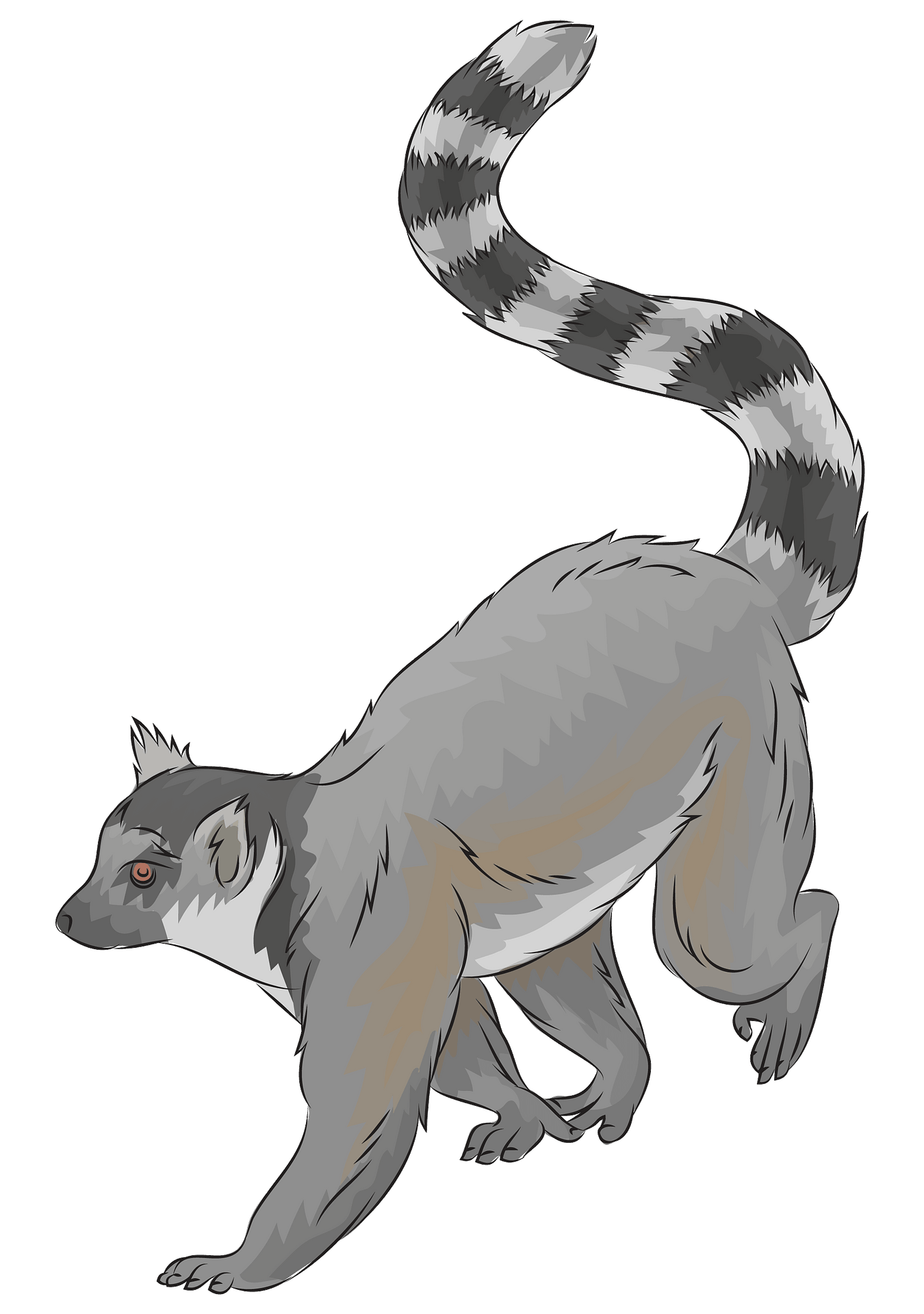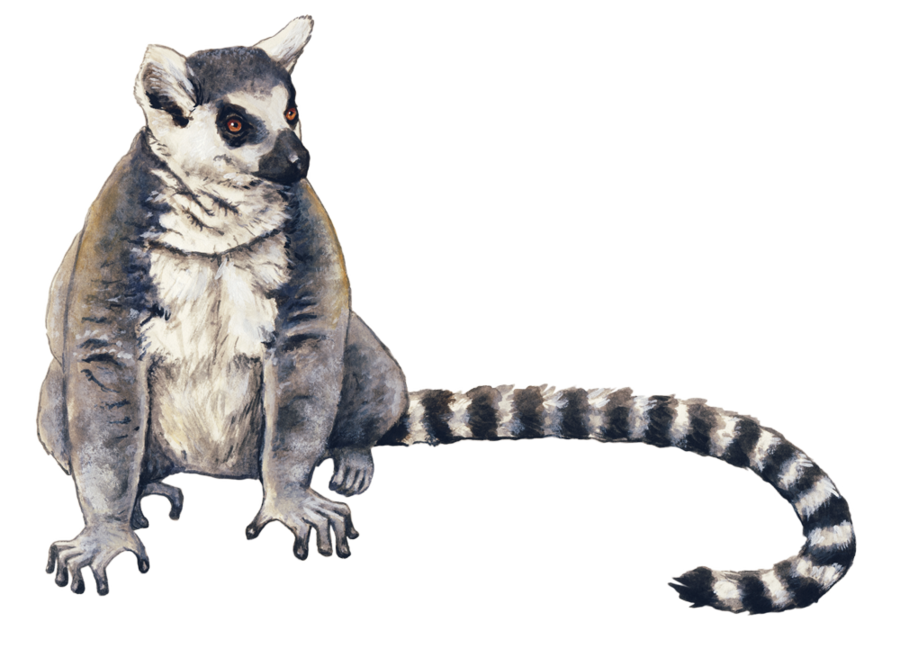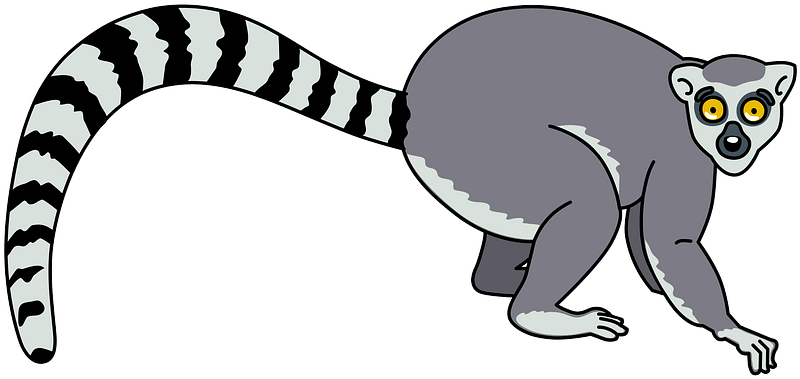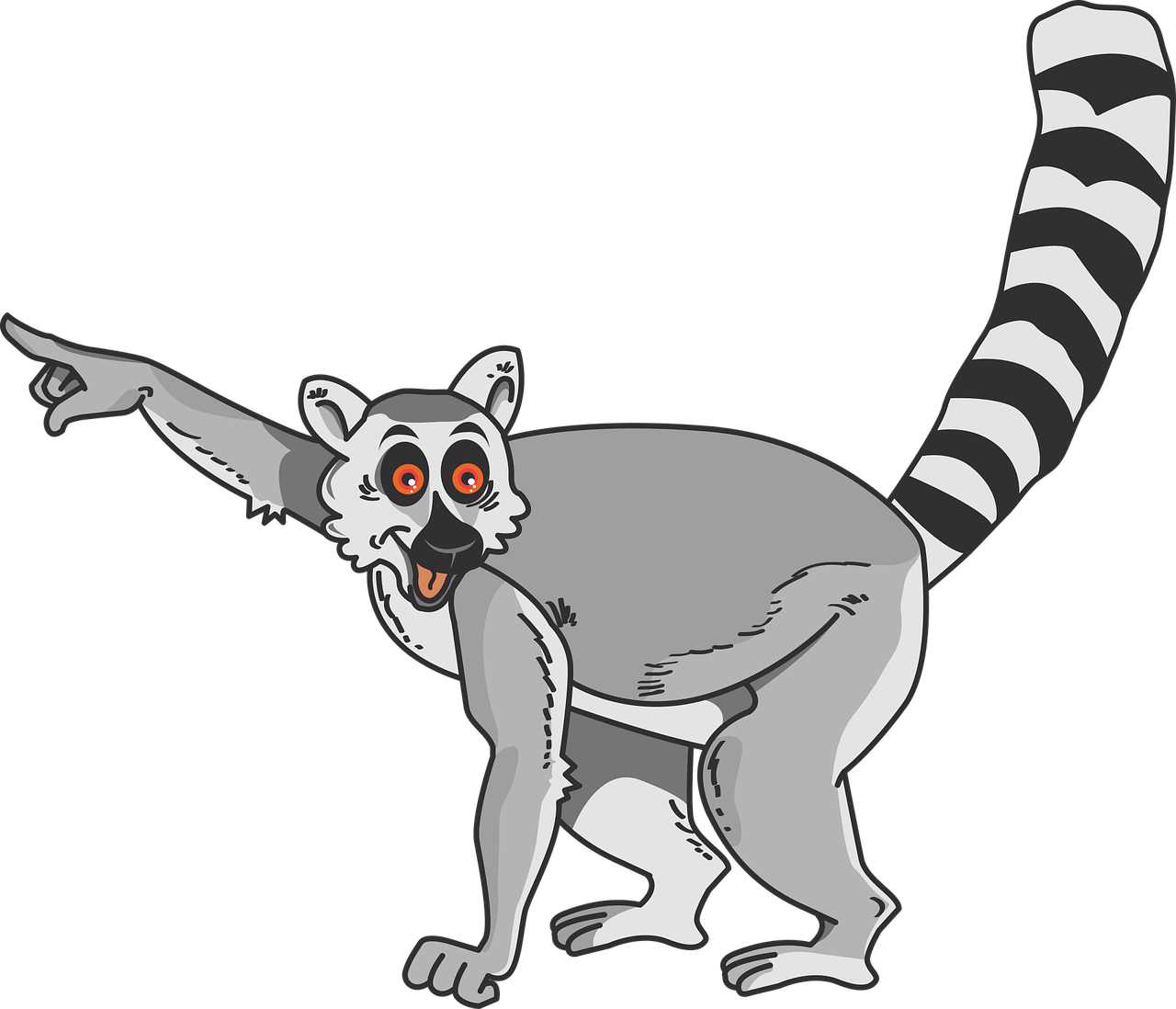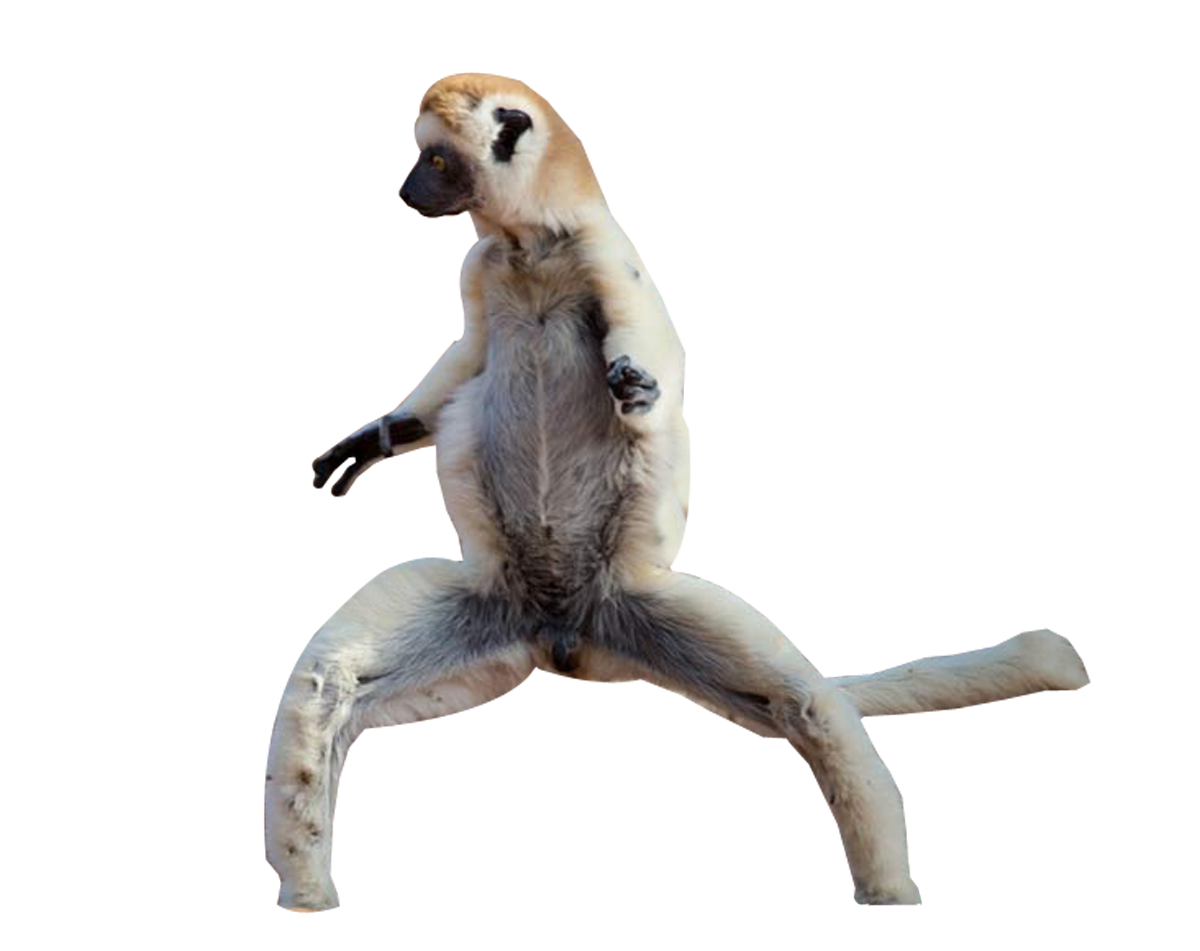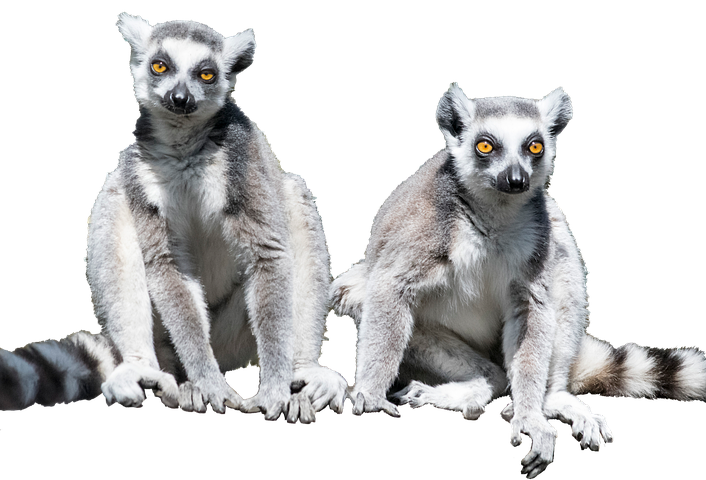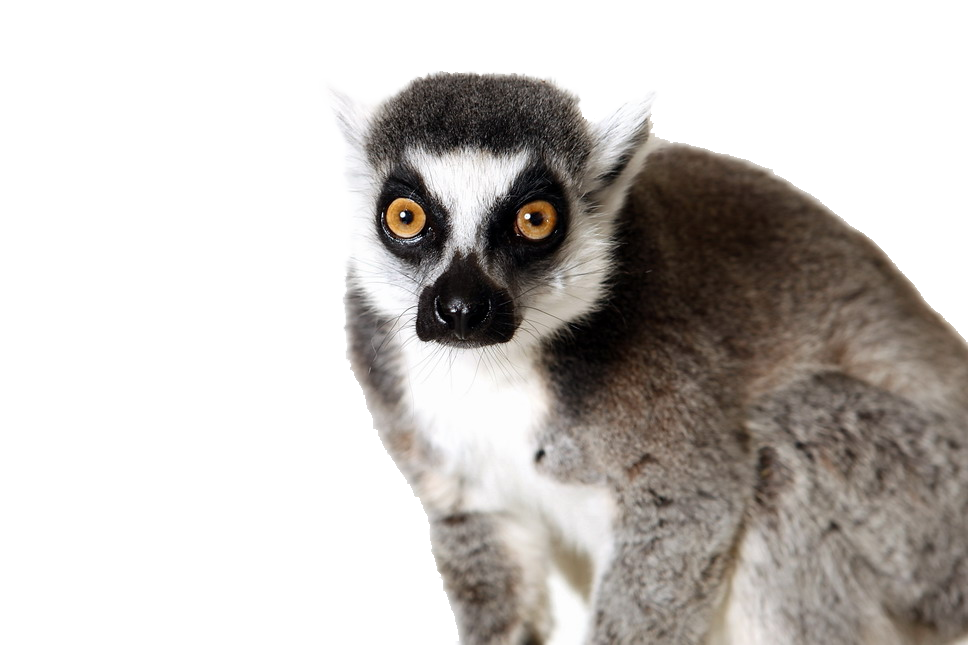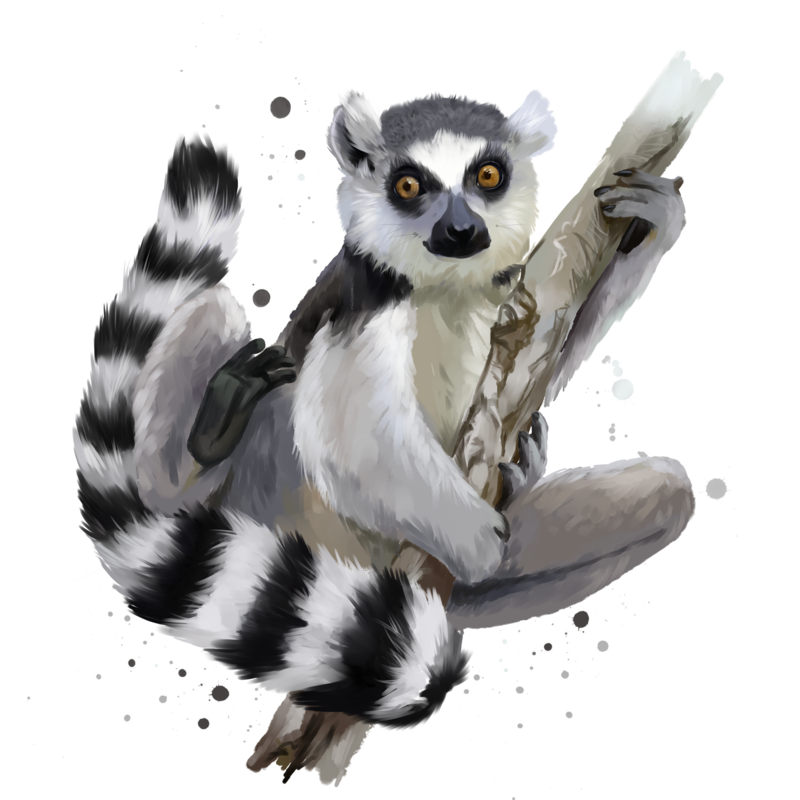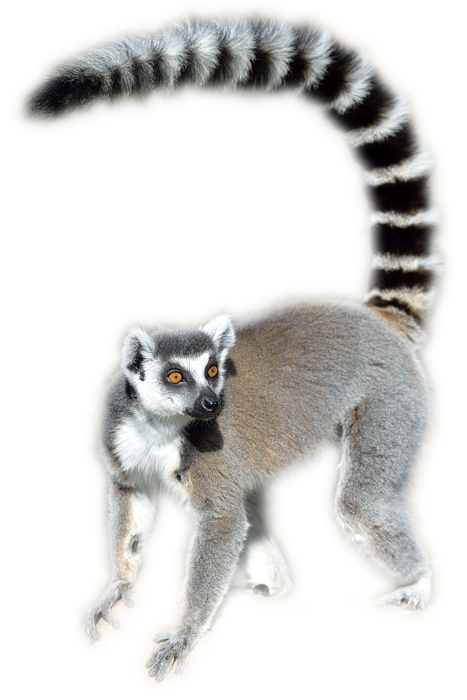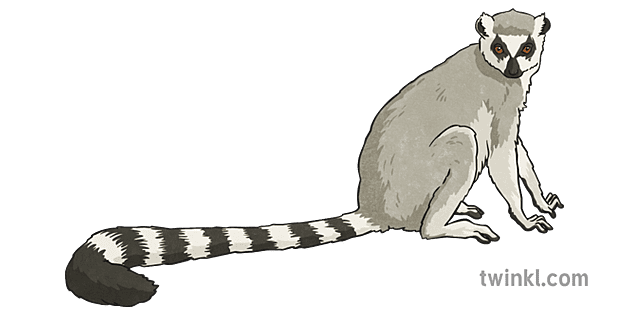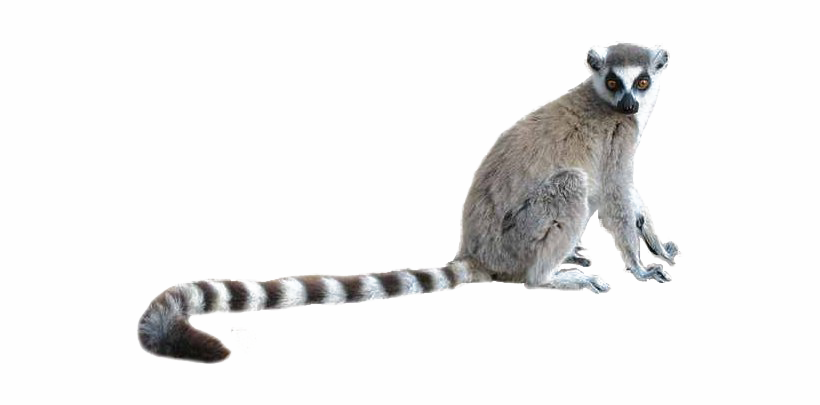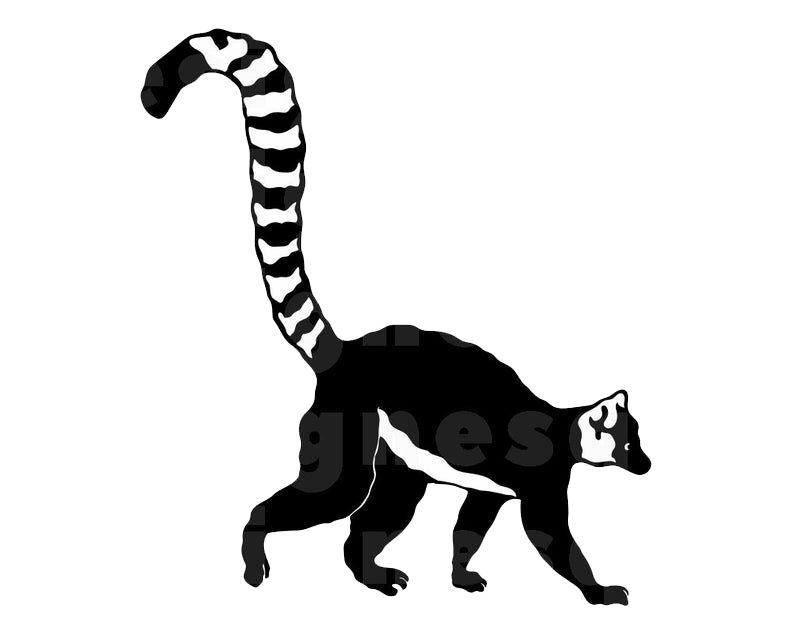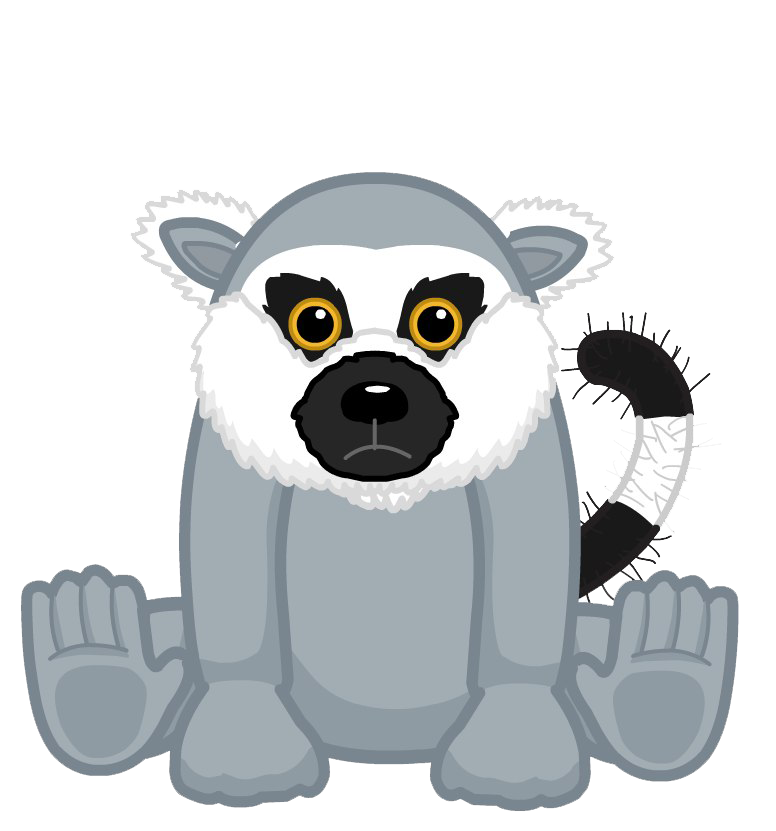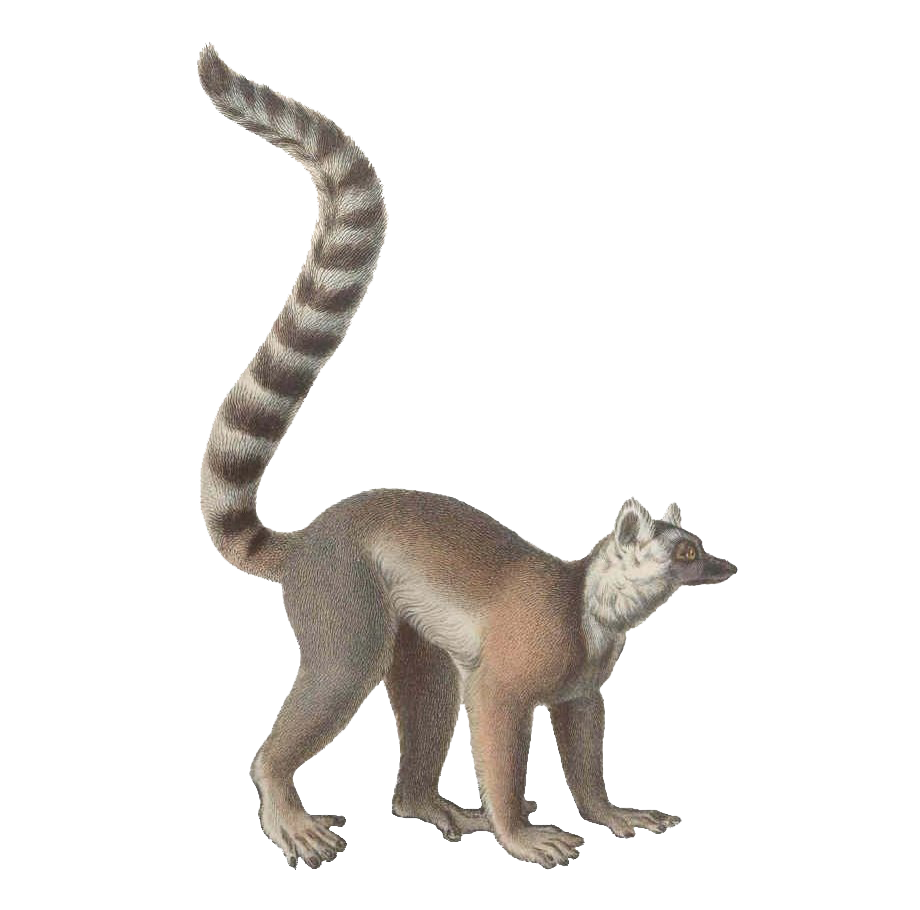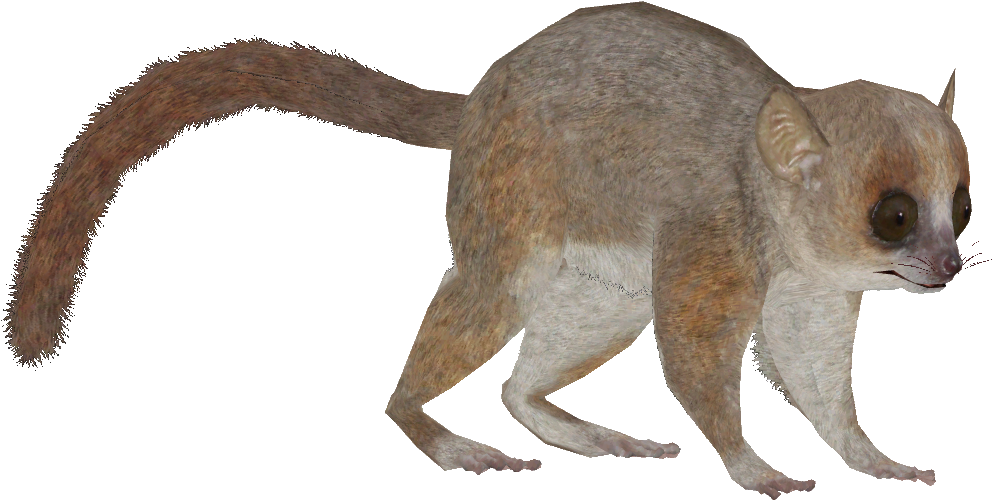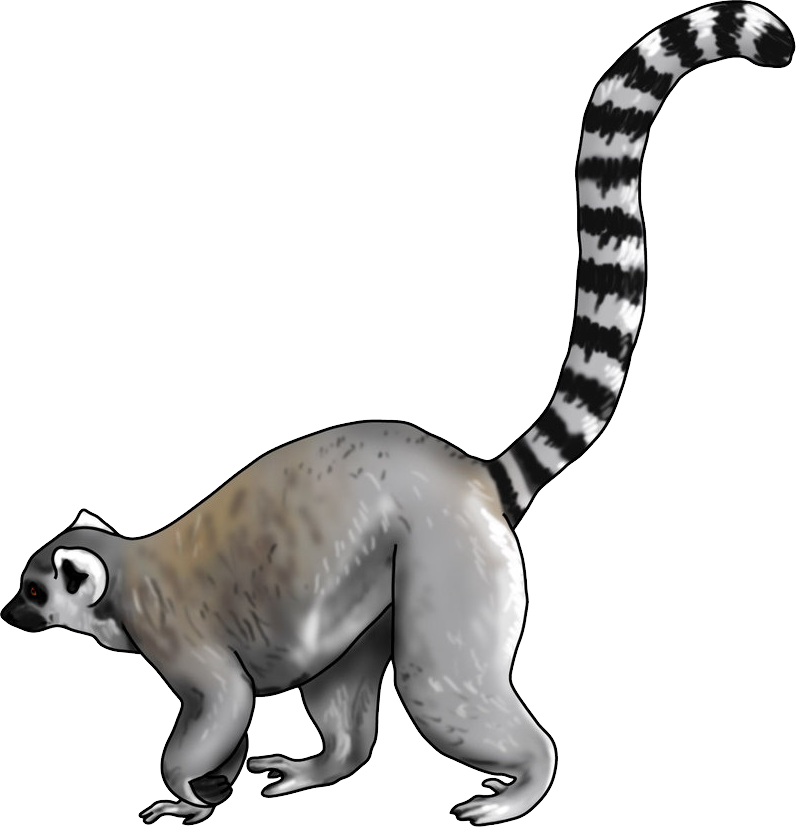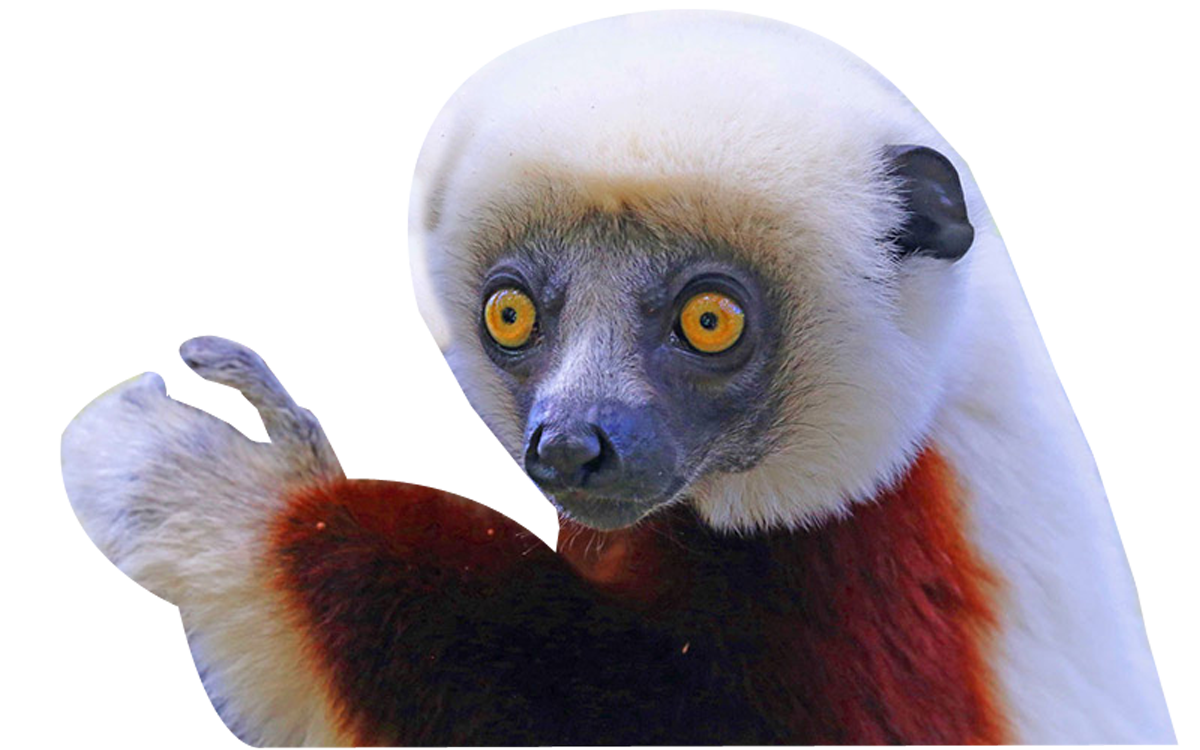Download top and best high-quality free Lemur PNG Transparent Images backgrounds available in various sizes. To view the full PNG size resolution click on any of the below image thumbnail.
License Info: Creative Commons 4.0 BY-NC
Lemurs are primates, a group of animals classified into eight families with 15 genera and over 100 species. They are exclusively found on Madagascar’s island. The majority of lemurs on the planet are tiny, with a pointed nose, huge eyes, and a long tail. They are mostly arboreal (living in trees) and are active at night (nocturnal).
Lemurs seem like other primates, yet they developed separately from monkeys and apes. Lemur evolution has created a degree of species variety that rivals that of any other primate group, because to Madagascar’s extremely seasonal environment. There were lemurs the size of male gorillas on the island until roughly 2,000 years ago, when humans arrived. Since the 1990s, the majority of species have been identified or elevated to full species status; nonetheless, lemur taxonomic taxonomy is debatable and relies on which species concept is utilized.
The mouse lemur weighs 30 grams (1.1 ounces) while the indri weighs 9 kilograms (20 pounds). Lemurs have divergent digits on their hands and feet, as well as nails instead of claws, which they share with other basic primates (in most species). Their brain-to-body size ratio, on the other hand, is less than that of anthropoid monkeys. They have a “wet nose,” as do all strepsirrhine primates (rhinarium). Lemurs are the most sociable of the strepsirrhine monkeys, relying on odors and vocalizations rather than visual signs to interact. Because lemurs have a low basal metabolic rate, they may go into dormancy, such as hibernation or torpor. Seasonal breeding and female social dominance are also seen. Some are specialists, while others consume a broad array of fruits and plants. Due to their varied diets, two kinds of lemurs may cohabit in the same habitat.
During the 18th and 19th centuries, lemur studies centered on taxonomy and specimen collection. It wasn’t until the 1950s and 1960s that modern research of lemur ecology and behavior began in earnest. Field investigations on Madagascar restarted in the 1980s after being hampered by political difficulties in the mid-1970s. Lemurs are valuable study subjects because of their combination of ancestral qualities and traits shared with anthropoid monkeys, which can reveal information about primate and human evolution. Due to habitat degradation and poaching, several lemur species are still vulnerable.
Many lemur species have already been extinct as a result of human activities in the previous 2000 years, and are generally referred to as “subfossil lemurs.” Despite the fact that indigenous traditions such as fady typically aid in the protection of lemurs and their forests, illicit logging, economic hardship, and political instability conspire to sabotage conservation efforts. Because of these dangers and diminishing populations, the International Union for Conservation of Nature (IUCN) considers lemurs to be the world’s most endangered animals, estimating that up to 90% of all lemur species face extinction in the wild over the next 20 to 25 years as of 2013.
However, as an iconic flagship species that epitomizes Madagascar’s biodiverse fauna, lemurs have aided the development of eco-tourism in Madagascar’s World Heritage Sites, such as the Atsinanana Rainforests in eastern Madagascar.
Furthermore, conservation organizations such as the Lemur Conservation Foundation and the Duke Lemur Center are increasingly pursuing community-based approaches, such as encouraging local communities to adopt sustainable agriculture and afforestation initiatives, expanding employment opportunities for ecological programs, and promoting public awareness and appreciation for lemurs.
Download Lemur PNG images transparent gallery.
- Lemur PNG Free Image
Resolution: 1654 × 1360
Size: 590 KB
Image Format: .png
Download
- Lemur PNG Image File
Resolution: 1350 × 1920
Size: 226 KB
Image Format: .png
Download
- Lemur Vector PNG Pic
Resolution: 1920 × 1469
Size: 190 KB
Image Format: .png
Download
- Lemur Vector PNG File
Resolution: 800 × 897
Size: 316 KB
Image Format: .png
Download
- Lemur Vector PNG Image
Resolution: 601 × 467
Size: 63 KB
Image Format: .png
Download
- Lemur Background PNG
Resolution: 900 × 658
Size: 414 KB
Image Format: .png
Download
- Lemur PNG
Resolution: 777 × 608
Size: 337 KB
Image Format: .png
Download
- Lemur Vector PNG Photo
Resolution: 2400 × 1321
Size: 196 KB
Image Format: .png
Download
- Lemur Vector PNG Cutout
Resolution: 800 × 379
Size: 35 KB
Image Format: .png
Download
- Lemur Vector PNG Images
Resolution: 800 × 800
Size: 342 KB
Image Format: .png
Download
- Lemur Vector PNG Photos
Resolution: 1280 × 1098
Size: 346 KB
Image Format: .png
Download
- Lemur PNG Pic
Resolution: 1200 × 951
Size: 512 KB
Image Format: .png
Download
- Lemur PNG File
Resolution: 738 × 720
Size: 178 KB
Image Format: .png
Download
- Lemur PNG Image
Resolution: 706 × 480
Size: 391 KB
Image Format: .png
Download
- Lemur PNG Photo
Resolution: 2400 × 1459
Size: 2417 KB
Image Format: .png
Download
- Lemur PNG Cutout
Resolution: 968 × 645
Size: 745 KB
Image Format: .png
Download
- Lemur PNG Images
Resolution: 800 × 800
Size: 491 KB
Image Format: .png
Download
- Lemur Vector Transparent
Resolution: 3800 × 8000
Size: 667 KB
Image Format: .png
Download
- Lemur PNG Photos
Resolution: 467 × 700
Size: 418 KB
Image Format: .png
Download
- Lemur Vector PNG
Resolution: 512 × 512
Size: 32 KB
Image Format: .png
Download
- Lemur Transparent
Resolution: 596 × 582
Size: 170 KB
Image Format: .png
Download
- Lemur PNG Clipart
Resolution: 630 × 315
Size: 22 KB
Image Format: .png
Download
- Lemur
Resolution: 820 × 405
Size: 138 KB
Image Format: .png
Download
- Lemur PNG Picture
Resolution: 794 × 635
Size: 104 KB
Image Format: .png
Download
- Lemur PNG HD Image
Resolution: 776 × 831
Size: 225 KB
Image Format: .png
Download
- Lemur PNG Image HD
Resolution: 920 × 910
Size: 338 KB
Image Format: .png
Download
- Lemur No Background
Resolution: 992 × 500
Size: 601 KB
Image Format: .png
Download
- Lemur Vector
Resolution: 796 × 827
Size: 228 KB
Image Format: .png
Download
- Lemur PNG Images HD
Resolution: 1200 × 750
Size: 1166 KB
Image Format: .png
Download

